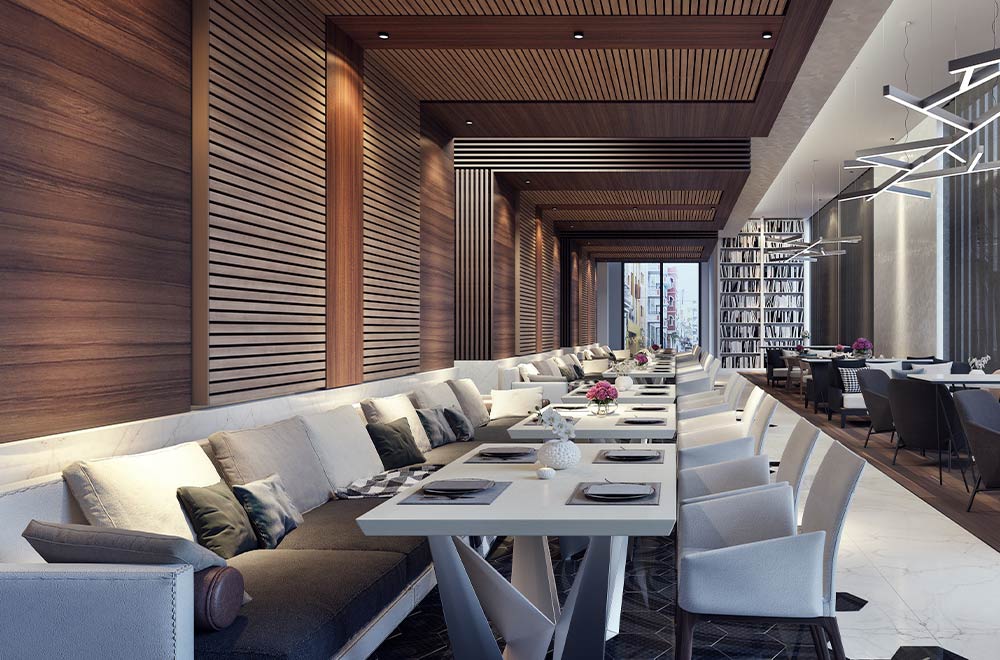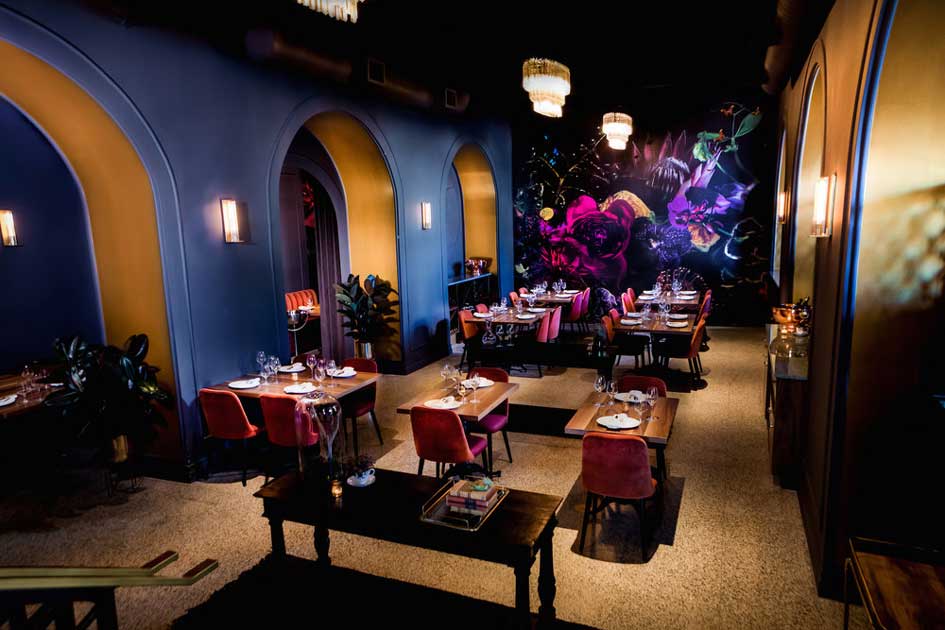Best Asian Restaurant Islamabad: Experience Tastes from Throughout Asia
Best Asian Restaurant Islamabad: Experience Tastes from Throughout Asia
Blog Article
Savor Genuine Eastern Food With a Pan-Asian Spin for a Culinary Experience
Starting a culinary journey with authentic Oriental cuisine, improved with a Pan-Asian twist, provides an one-of-a-kind chance to check out the rich tapestry of flavors that specify the region's varied cooking practices. This experience welcomes you to appreciate the splendid equilibrium of preferences-- wonderful, salted, spicy, and sour-- balanced by aromatic herbs and seasonings. Think of the ingenious combination of Thai curry and ramen or the unforeseen joy of sushi burritos. As you ponder these attracting recipes, take into consideration the cultural narratives and historical influences that form them, each bite providing a story waiting to be discovered.

Discovering Pan-Asian Flavors
In the realm of worldwide gastronomy, Pan-Asian cuisine sticks out for its remarkable diversity and the harmonious interplay of tastes from different Asian cultures. This culinary approach commemorates the rich practices and special components located throughout the continent, producing a tapestry of preferences that is both satisfying and intriguing. Secret to Pan-Asian food is its capability to stabilize contrasting flavors-- sweet, salted, spicy, and sour-- while highlighting the freshness and high quality of each active ingredient.
From the umami-rich soy sauce of Japan to the fiery chili peppers of Thailand, Pan-Asian cuisine offers a substantial combination of tastes. These elements are typically combined in innovative means, enhancing meals with layers of intricacy. For instance, making use of aromatic natural herbs such as lemongrass and cilantro, common in Vietnamese and Thai cuisine, includes a refreshing brightness to recipes, while the unification of coconut milk provides a velvety, rich appearance.
The emphasis on fresh fruit and vegetables and aromatic seasonings makes certain that each meal is not just a banquet for the palate yet additionally for the senses. Pan-Asian food invites restaurants to start a cooking trip, checking out the huge and differed landscapes of Eastern gastronomy with every bite.
Combination Meals to Try
While Pan-Asian food is celebrated for its traditional flavors, the modern culinary landscape is progressively accepting combination recipes that blend these classic aspects with influences from other areas. This innovative method not only honors the rich heritage of Oriental cooking arts yet additionally presents novel preference experiences that appeal to contemporary tastes buds.
An archetype of such a fusion dish is the Korean-Mexican taco, where marinated bulgogi beef is wrapped in a cozy tortilla, topped with kimchi and a zesty gochujang-infused salsa. This mix weds the bold, tasty flavors of Korea with the dynamic, fresh aspects of Mexican cuisine. Similarly, sushi burritos have acquired popularity, integrating the fragile creativity of Japanese sushi with the passionate, hand-held convenience of a burrito, commonly including blend ingredients like tempura shrimp and avocado with a drizzle of wasabi mayo.
Another significant meal is Thai curry ramen, which infuses the velvety, aromatic seasonings of Thai curry into the calming broth of conventional Japanese ramen, producing a harmonious blend that tantalizes the senses. These blend dishes prolong beyond plain novelty; they stand for a cooking dialogue between cultures, urging expedition and development on the planet of Pan-Asian food.
Vital Ingredients and Seasonings
To absolutely value Pan-Asian food, one have to understand the important ingredients and flavors that create its foundation. This varied more helpful hints culinary design attracts from a rich tapestry of Eastern customs, using an unified blend of flavors michelin star restaurants and structures.
Aromatic components are critical, with lemongrass, garlic, and ginger being ubiquitous across different Pan-Asian dishes. These ingredients offer a great smelling base that enhances the intricacy of flavors. Spices such as star anise, cardamom, and cinnamon present heat and character, resembling influences from regions like China and India.

Cooking Strategies and Tips
Grasping the art of Pan-Asian cuisine calls for familiarity with its distinct cooking techniques, each adding to the vivid tapestry of tastes this culinary tradition is celebrated for. Central to these methods is the stir-fry, a fast food preparation strategy that maintains the dietary integrity and vivid colors of components. Making use of a frying pan, the stir-fry method enables also heat circulation, necessary for attaining the characteristic texture and flavor balance of Pan-Asian meals.
An additional fundamental strategy is steaming, particularly common in Chinese cuisine. This mild technique preserves the natural tastes and nutrients of components, making it excellent for fish and shellfish and vegetables. Dumplings, a cherished staple, typically benefit from steaming, leading to soft, delicious appearances.
Cooking, likewise essential, gives smoky midsts to meals such as Korean bulgogi or Japanese yakitori (Instagrammable restaurants Islamabad). This technique often includes seasoning components, permitting tastes to pass through deeply before cooking over an open fire or warmer
Last but not least, understanding the art of balancing flavors-- pleasant, sour, salted, bitter, and umami-- is vital. Effectively layering these components can elevate a recipe from ordinary to phenomenal, providing a complex click site and pleasing culinary experience that embodies the significance of Pan-Asian food.
Eating Experiences Worldwide
Across the world, Pan-Asian cuisine uses an unrivaled eating experience, commemorated for its abundant tapestry of tastes and dynamic presentations. This culinary phenomenon has gone beyond social boundaries, recording the hearts and palates of food fanatics worldwide. In cosmopolitan cities fresh York, London, and Sydney, Pan-Asian dining establishments function as melting pots where culinary customs from Thailand, Japan, China, and beyond converge, offering restaurants with a diverse mix of recipes that highlight the region's diversity.
The global charm of Pan-Asian cuisine exists in its capability to provide both authenticity and development. Chefs skillfully wed conventional active ingredients such as lemongrass, soy sauce, and miso with contemporary methods, causing recipes that are both familiar and refreshingly new. This combination enables restaurants to embark on a culinary trip that respects heritage while embracing modernity.
In addition, eating experiences are boosted through attentively designed atmospheres that reflect the principles of Pan-Asian aesthetic appeals. From minimalist Japanese-inspired insides to vibrant Thai-themed spaces, each dining establishment supplies a special setting that matches the culinary offerings. Because of this, patrons are not merely eating a meal yet partaking in a cultural experience, making Pan-Asian dining an absolutely international phenomenon.
Conclusion
The expedition of Pan-Asian cuisine uses a profound understanding of the detailed interaction of tastes and cooking customs across Asia. By welcoming blend meals such as Thai curry ramen and sushi burritos, the cooking trip not only highlights the adaptability of standard ingredients yet additionally showcases cutting-edge modern-day techniques. This gastronomic journey, enhanced by cooking methods and important seasonings, provides a distinct opportunity to value the multiculturalism and cooking artistry that specify Pan-Asian food on a global scale.
Getting started on a cooking journey via authentic Eastern cuisine, improved with a Pan-Asian twist, supplies a distinct opportunity to explore the rich tapestry of tastes that specify the region's diverse cooking traditions.In the world of global gastronomy, Pan-Asian cuisine stands out for its impressive diversity and the harmonious interplay of flavors from numerous Eastern societies. Key to Pan-Asian cuisine is its capability to balance different flavors-- pleasant, salted, spicy, and sour-- while highlighting the freshness and top quality of each active ingredient.

Report this page